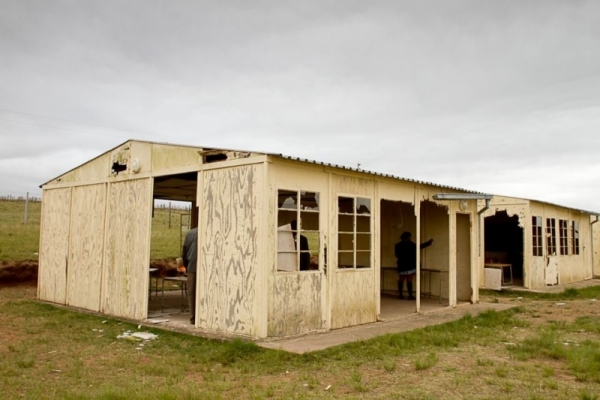

Many schools in the Eastern Cape are in a terrible state, and replacing them often takes far too long. Photo courtesy of Equal Education.
31 October 2018
Equal Education (EE) has launched a report on why it takes so long for school infrastructure to be delivered. After several meetings with the Eastern Cape Department of Education, school visits and meetings with implementing agents in the province, EE launched its report – The Implementing Agents: The middlemen in charge of building schools – on Wednesday, at the Isivivane Centre in Khayelitsha, Cape Town.
According to the report, “Implementing Agents (IA) can be state-owned enterprises, government departments, public entities and non-profit organisations. They provide technical support to departments, especially in rural and historically disadvantaged provinces such as the Eastern Cape.”
The report says that it is the provincial education departments that decide which projects to allocate to a particular IA.
In her presentation, Nika Soon-Shiong, former EE Eastern Cape researcher and author of the report, said, “Building a school should take about three years maximum. There are eight implementing agents in the Eastern Cape, including the Coega Development Corporation, The Imvula Trust and Amatola Water-Amanzi. We have seen schools like Lutholi Primary School in Umtata, where IA’s were supposed to build a school, and they only laid a foundation and never returned.”
There are processes and procedures involved in the building of schools, which also takes time. The signing of documents by one department to another can take weeks before procurement of the implementing infrastructure is finalised, according to Soon-Shiong.
The report found that “each procurement typically takes three months, yet there is no law stipulating that it has to happen within a three months’ timeframe. If an IA appoints a contractor past his four month limit, there can be an extension of the tender validity period. During that time, prices of materials often escalate and a contractor might foresee that continuing with the project will cause them to lose money, resulting in the contractor to abandon the project, and then a new tender process is needed to appoint a new contractor.”
“In order to enable the public to hold the government accountable for building schools and delivering infrastructure, we need the status of these projects to be made available for public access,” said Nika.
Itumeleng Mothlabane, EE Eastern Cape Junior Organiser, said it is not easy to engage with the IA’s in the province. “Most of the time IAs and the Eastern Cape Department of Education (ECDoE) do not know what is happening on the ground … due to inaccurate data. They do not have the capacity to address infrastructure backlogs. They struggle to provide oversight, that can assess the performance of contractors. There is a lack of accountability, as the IAs do not want to form steering committees and they do not want to share information with EE. And there are poor channels of communication, as sometimes we have to present the same thing to the IA in a meeting and have to say it again to the ECDoE in a different meeting.”
Mathlabane also acknowledged some of the challenges faced by the IAs. “IA’s often complain that the payment process takes too long and there is lack of communication from the ECDoE.”
The EE report is in line with its Norm and Standards for School Infrastructure Campaign, known as the Michael Komape campaign (named after a child who drowned in a pit toilet at his school in Limpopo). It has had some success: “Forbes Grant High School in King Williams Town has a new fence; Vukile Tshwete, also in King Williams Town has a new site being fenced; Qonce High School and Imiqhayi High School both have [new] toilets,” said Mathlabane.
Correction: The story originally said there were three (instead of eight) implementing agents in the Eastern Cape.